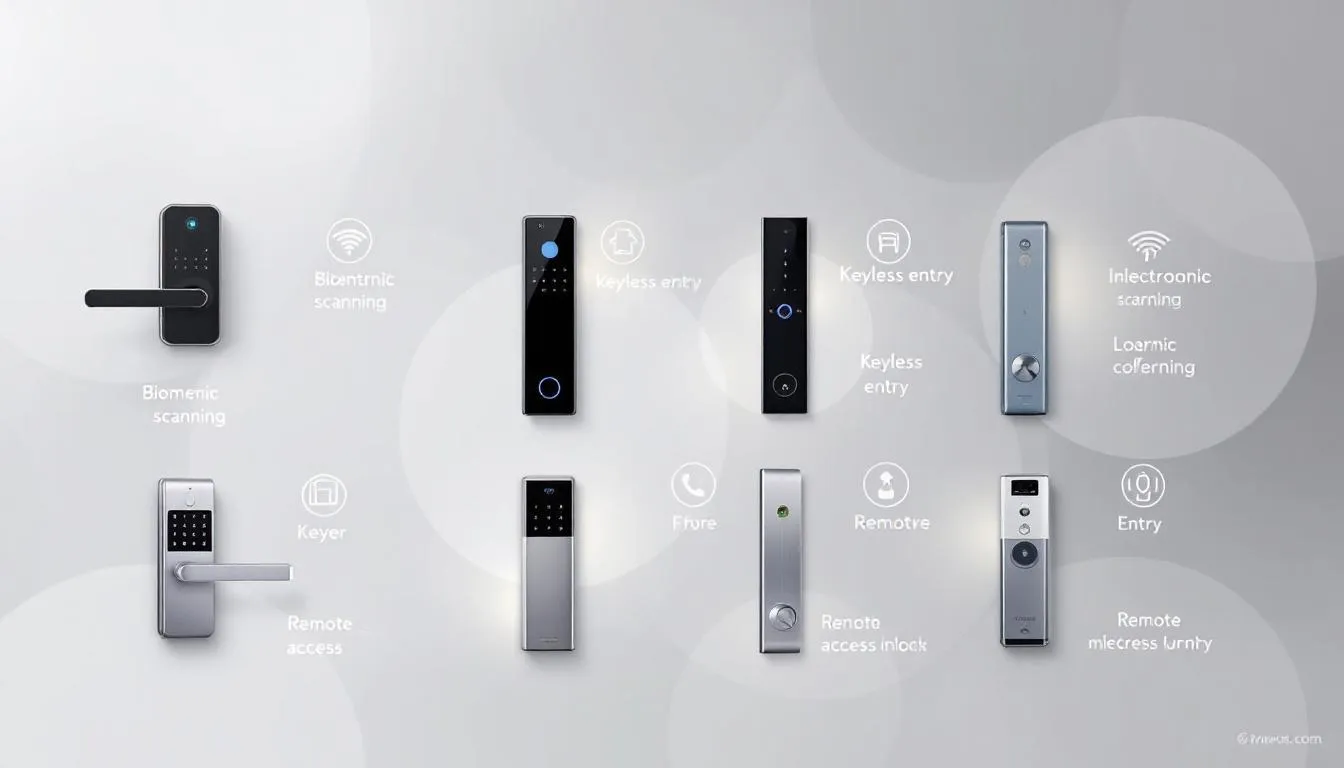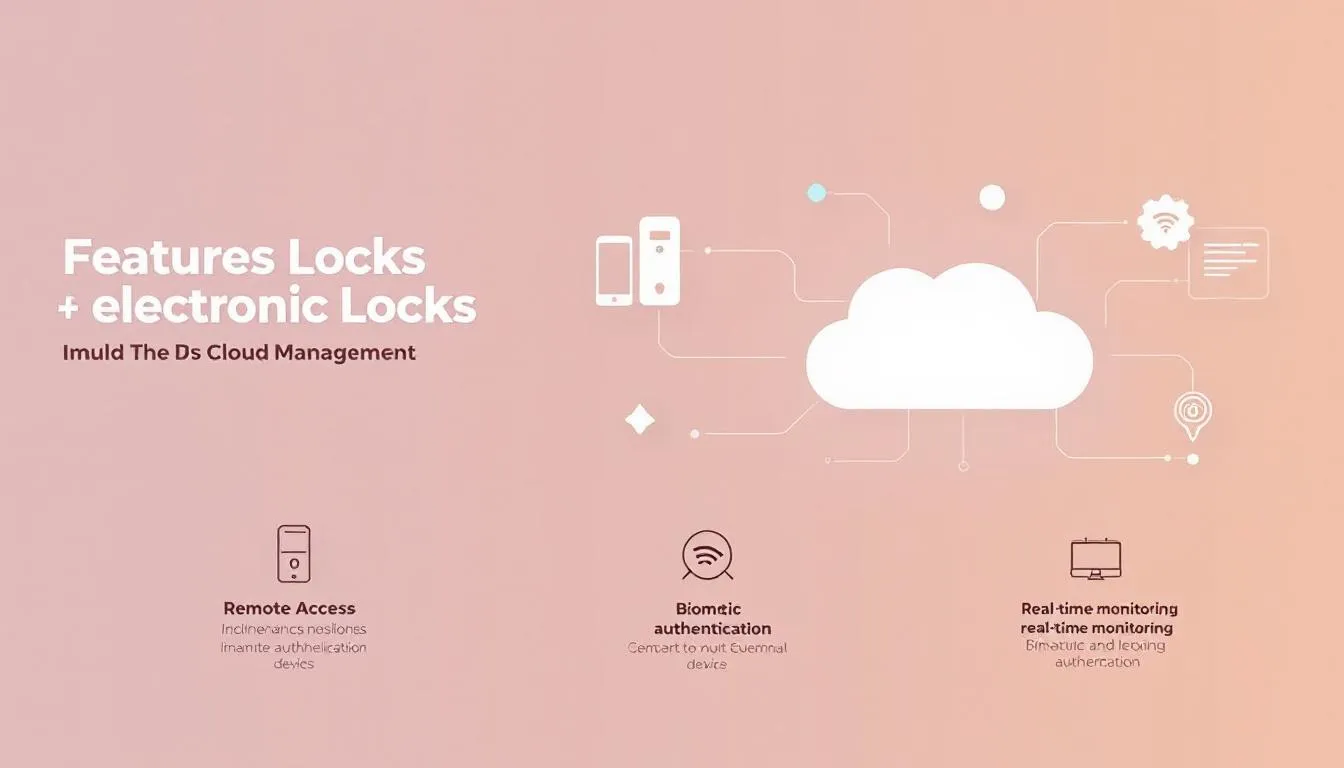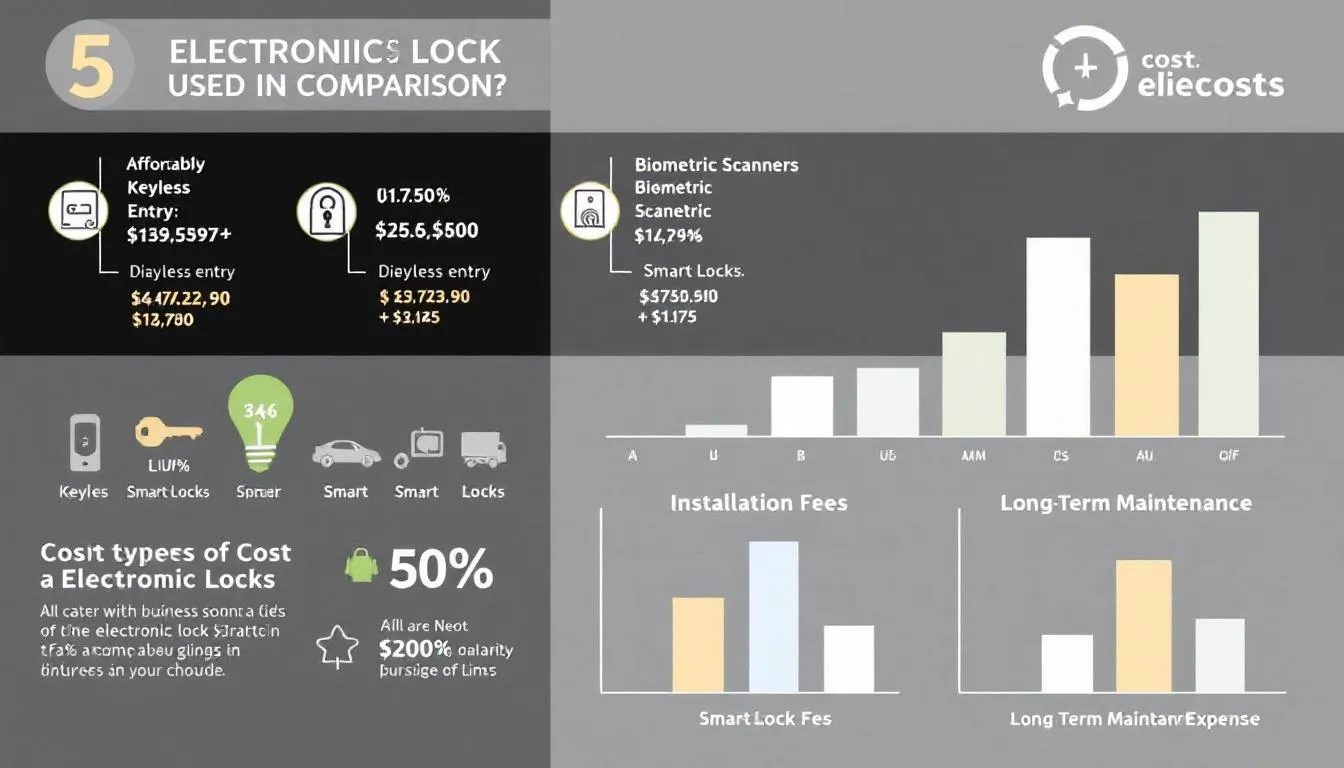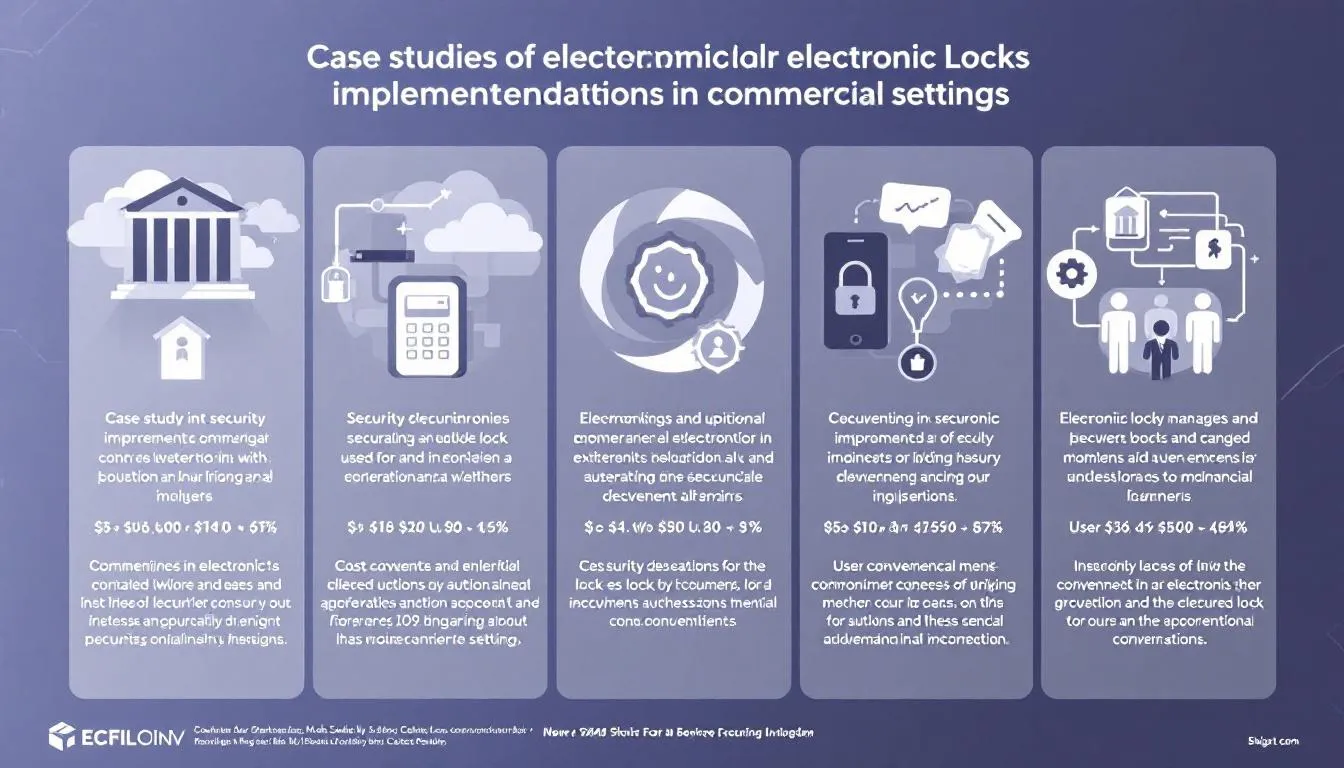For dealers, system integrators, and commercial property managers, selecting the right electronic lock is more than just a security decision—it’s a strategic investment in operational efficiency and tenant satisfaction. From office buildings and co-working spaces to hospitality and multifamily properties, each business environment demands a tailored access control solution.
To identify the right electronic lock, consider key factors such as user volume, integration with existing access systems, remote management needs, and the level of security required. Whether you’re outfitting a high-traffic lobby or upgrading a facility with smart access control, this guide will help you evaluate key features, compare lock types, and align your selection with real-world business needs.
Key Takeaways for Dealers and Commercial Buyers
- Electronic locks offer a scalable and secure solution for modern commercial properties—delivering keyless entry, remote access control, and real-time activity logs that traditional locks cannot match.
- When selecting the right lock for your project, consider security grade, daily user volume, and integration compatibility with existing building management or access control systems.
- Professional installation and scheduled maintenance are essential to maximize the lock’s lifespan and performance—especially for high-traffic or mission-critical environments.
Importance of Electronic Locks for Modern Businesses

Electronic locks have shifted from being a premium upgrade to a business essential. With over 78% of commercial properties now deploying some form of electronic access control, smart lock systems have become a critical component in modern facility management. Advanced features—such as biometric authentication and mobile credentialing—significantly reduce the risk of unauthorized entry by ensuring that only verified personnel can access sensitive areas.
As a supplier, we’ve seen growing demand for smart door locks that deliver both enhanced security and operational efficiency. Today’s leading solutions offer:
- Remote access control – Property managers and business owners can issue or revoke permissions instantly via cloud-based platforms.
- Touchless credentials – Ideal for businesses with high staff turnover, multi-site operations, or health-focused entry protocols.
- Seamless integration with surveillance systems – Access logs paired with video footage create a complete audit trail, strengthening accountability.
In addition, keyless deadbolt locks help eliminate the logistical headaches of physical key management. With programmable access schedules and customizable permissions, businesses can respond quickly to changing needs—such as staffing changes, vendor visits, or after-hours access—without compromising security.
Retailers, coworking spaces, and hospitality operators especially benefit from this flexibility, using centralized dashboards to streamline operations across multiple entry points. For B2B clients, this means lower security risk, fewer operational disruptions, and a more professional access control system that grows with their business.
How to Select the Right Electronic Lock for Your Commercial Project
Choosing the right electronic lock isn’t just about security—it’s about matching the right technology to your operational needs. For B2B buyers and dealers, understanding your client’s access volume, site layout, and integration requirements is essential to delivering a future-proof solution.
Start by assessing security expectations and user volume. The lock must support the number of daily users—whether it’s a small office or a high-traffic retail space—while offering reliable protection against unauthorized access.
System compatibility is just as critical. The lock should integrate smoothly with your client’s existing infrastructure, such as access control panels, CCTV, or property management software. A lock that works in isolation is a missed opportunity; integration is where true value and scalability emerge.
Also consider the locking mechanism. For example, electronic keypad locks are a popular choice due to their flexibility, easy credential management, and low maintenance. They provide simple yet secure access, and can be layered with biometric or RFID authentication for added control.
In the next sections, we’ll break down the key considerations—user management, system integration, and lock configuration—so you can confidently recommend the best-fit solution for each business client.
Security Requirements for Commercial Electronic Locks
When specifying electronic locks for commercial applications, the first priority is understanding the specific security demands of the environment. Whether you’re outfitting a retail chain, office complex, or industrial facility, each setting presents different challenges—and the right lock must proactively address them.
Key features to prioritize:
- Tamper-resistant construction to withstand physical interference in high-traffic or public-facing areas.
- Access logging to track user entry for accountability and audits.
- Real-time alerts to notify facility managers of unauthorized access attempts or abnormal usage patterns.
- Remote access control for centralized management across multiple sites or properties.
- Fail-secure locking mechanisms, which maintain security during power outages or system failures—crucial for emergency egress or high-security zones.
From a B2B supplier’s perspective, it’s also vital to recommend scalable lock systems. As clients expand operations, they’ll need access control solutions that scale across new entry points and integrate seamlessly into larger building management platforms. Helping clients choose between wired or wireless installations based on infrastructure and long-term growth is a value-add that sets you apart.
User Capacity & Credential Flexibility
A robust electronic lock system must support flexible user access management. Commercial buyers are increasingly prioritizing systems that can accommodate frequent personnel changes and high user volumes without operational disruption.
Recommend solutions that support:
- Touchless access via RFID cards or mobile credentials, ideal for fast-paced workplaces or environments with hygiene requirements.
- Wall-mounted credential readers for secure entry validation at high-use access points.
- Multi-factor options, including PIN codes, for layered access control or shared workspaces.
The ability to instantly grant, restrict, or revoke access through a centralized platform is a key selling point for property managers, HR departments, and IT teams managing facility security. This flexibility improves both security and operational efficiency.
System Integration & Connectivity
For enterprise-level clients or multi-site operations, compatibility with existing infrastructure is non-negotiable. When recommending electronic locks, confirm they can be easily integrated into:
- Centralized access control systems
- Cloud-based management platforms with auto-updates
- Smart security ecosystems, including surveillance, alarms, and sensors
- Smart building platforms such as KNX, BACnet, or commercial-grade IoT networks
Ensure the lock system is compatible with the client’s current wiring, or offer wireless options where retrofitting is cost-prohibitive. For clients transitioning from analog to smart systems, suggest hybrid models that bridge legacy and modern security features.
Lock Security and Grades
When selecting a commercial-grade door lock system, lock security ratings and performance certifications are essential benchmarks. Industry-recognized standards from the Builders Hardware Manufacturers Association (BHMA) and the American National Standards Institute (ANSI) categorize locks into Grades 1 through 3. Grade 1 locks offer the highest durability and tamper resistance, making them the preferred choice for commercial applications where 24/7 security and operational reliability are non-negotiable.
As a supplier, we advise dealers and integrators to prioritize electronic locks that meet ANSI Grade 1 standards, especially in high-traffic or high-risk environments. Modern commercial systems increasingly utilize advanced locking solutions such as electromagnetic (mag) locks and electric strike locks—engineered to endure heavy usage cycles and resist forced entry. These technologies integrate seamlessly with access control platforms, enabling centralized credential management, remote unlocking, and activity logs via cloud-based dashboards or local networks.
Investing in high-grade electronic locks is not just about securing entry points—it’s about future-proofing infrastructure. For dealers and commercial clients, the ability to offer solutions with real-time monitoring, remote management, and compliance with industry standards translates into measurable value and reduced liability. Selecting certified hardware is a proactive step toward enhancing safety, reducing maintenance costs, and delivering long-term reliability in commercial security deployments.
Types of Electronic Locks for Businesses

Today’s commercial environments demand diverse locking solutions to meet varying security, compliance, and operational needs. From traditional mechanical options to cutting-edge electronic systems, each lock type serves specific business applications. Mechanical locks, including basic cylindrical designs, remain valued for their simplicity and affordability—especially in low-security zones. Cylindrical locks are widely adopted across offices and retail spaces for their ease of installation and compatibility with electronic access control setups.
Mortise locks, on the other hand, offer enhanced durability and resistance to tampering, making them ideal for high-traffic or high-security environments. While traditional locks are still in use, more commercial facilities are transitioning to advanced keyless electronic locks to streamline access and improve oversight.
Among modern electronic locking options, Grade 1 commercial locks are the gold standard. Rated by ANSI/BHMA, these locks offer maximum strength and are best suited for demanding security applications. Key electronic lock types include:
Magnetic Locks
Maglocks use an electromagnet mounted on the door frame paired with a metal armature plate on the door. When powered, they deliver holding forces up to 1,800 lbs., ideal for securing high-risk zones or facilities requiring constant fail-safe locking—such as data centers or emergency exits.
Electric Strike Locks
Electric strike locks are versatile, frame-mounted devices that work with mechanical locksets or panic bars. These are commonly integrated into access control systems to enable remote or credential-based entry, especially in buildings that require compliance with fire safety and egress regulations.
Keyless Smart Locks
Keyless smart locks offer multi-method access—PIN codes, RFID, Bluetooth, or mobile apps—making them highly adaptable for offices, coworking spaces, and multi-tenant buildings. These locks eliminate the need for physical keys, simplifying access control for administrators. Some models still include mechanical key overrides for emergency use, ensuring operational continuity during power or network failures.
Smart locks also support remote management, real-time access logs, and integration with broader building security systems. Dealers and integrators benefit from their ease of deployment, reduced service calls, and compatibility with cloud-based platforms, making them an increasingly popular option for scalable commercial security.
Features to Look for in an Electronic Lock

When selecting an electronic lock for commercial or industrial use, it’s essential to assess features that align with the scale and complexity of your environment. Facilities such as factories, warehouses, or distributed commercial properties demand electronic locks that not only provide robust security but also support remote management and integration with existing infrastructure.
Below are three mission-critical capabilities to evaluate:
Remote Access and Cloud-Based Management
Modern smart lock systems offer real-time remote access control, allowing administrators to manage permissions and monitor activity through centralized cloud dashboards. This is especially advantageous for multi-site businesses or facilities with off-site security teams. Key features include:
- User credential management and access scheduling
- Custom authentication rules based on time, user role, or zone
- Real-time event alerts and audit trails
- Seamless integration with CCTV and alarm systems for unified security
Cloud-connected Wi-Fi or network-enabled commercial locks support:
- Alerts for failed or unauthorized access attempts
- Automatic over-the-air firmware updates
- Remote diagnostics and system health checks
- Scalable administration via mobile or desktop apps
These capabilities allow digital lock dealers and enterprise customers to offer streamlined control with reduced on-site maintenance.
Durability and Environmental Resistance
For businesses operating in high-traffic or harsh environments, durability is paramount. Commercial-grade electronic locks are built with impact-resistant housings, reinforced latches, and tested electronics that can withstand daily wear and external forces.
For exterior doors or exposed areas, weather-resistant ratings (such as IP65+) are critical. These locks are sealed to resist moisture, dust, and temperature fluctuations—ideal for retail storefronts, public facilities, or industrial perimeters.
In contrast, entry-level models suited for low-security interior applications may prioritize cost-efficiency over extreme durability—making it important for dealers to match products with the intended environment.
Battery Life and Power Backup
Battery reliability is a top concern in smart lock performance. Most high-quality keyless deadbolt locks use long-life lithium batteries, offering 12–18 months of usage under standard operation. Low-battery indicators notify users before lock failure occurs, minimizing disruptions.
For critical-entry applications, power redundancy is essential. Many commercial electronic locks include 9V emergency power ports to temporarily restore access during outages. Some models also support hardwired or PoE (Power over Ethernet) configurations for uninterrupted performance.
By offering locks with dependable battery life and backup options, suppliers can ensure continuous access control while reducing emergency service calls.
Locking System Compliance
For commercial property owners and facility managers, ensuring that electronic locking systems comply with regulatory codes is not optional—it’s essential. Commercial door lock systems must align with key standards such as the International Building Code (IBC) and International Fire Code (IFC), which define critical requirements for emergency egress, accessibility, and occupant safety.
Smart locks—ranging from automatic door locks and keypad-operated models to magnetic and electric strike locks—can be specified and configured to meet these codes. For instance, fail-safe magnetic locks are widely used in commercial access control systems because they offer strong holding force while allowing for immediate release during power failure or fire alarm activation, ensuring safe evacuation routes remain accessible.
From a supplier’s standpoint, offering code-compliant solutions helps B2B buyers avoid costly regulatory violations and reinforces the value of partnering with a knowledgeable manufacturer or distributor. Products designed for code compliance open opportunities in sectors with strict safety mandates, such as education, healthcare, hospitality, and public infrastructure.
Moreover, ongoing compliance requires more than just proper installation—it demands regular inspection, maintenance, and firmware updates to keep systems functioning as intended. Commercial clients rely on trusted hardware partners to deliver not only high-quality products but also the guidance to maintain legal and operational readiness.
Providing compliant locking systems is not just about meeting regulations—it signals your commitment to safety, risk mitigation, and professional excellence in commercial security.
Installation and Maintenance Tips
For dealers and commercial security integrators, ensuring proper installation and ongoing maintenance of electronic locks is critical to guaranteeing their performance, safety, and longevity in real-world applications. Whether deployed in offices, retail environments, or industrial sites, smart locks must be installed and maintained to the highest standards to prevent downtime and operational risks.
Professional Installation
We strongly recommend professional installation by certified technicians to ensure optimal alignment, system integration, and compliance with building and fire codes. Poor installation is a common cause of early failure or access issues—especially with high-volume commercial use. Investing in expert setup not only prevents future malfunctions but also minimizes service calls and enhances end-customer satisfaction. For B2B buyers and distributors, offering or recommending certified installation services adds long-term value to your product portfolio.
Routine Maintenance and Software Updates
Electronic locking systems, like any advanced technology, require scheduled maintenance to perform reliably. Key upkeep tasks include:
- Rotating or revoking expired access credentials
- Checking battery status and replacing power sources on schedule
- Inspecting for mechanical wear on handles, latches, or electronic keypads
- Cleaning sensor interfaces for optimal performance
Cloud-based smart locks simplify much of this process by enabling remote diagnostics, real-time alerts, and automatic firmware updates. These capabilities not only keep the lock functioning securely but also reduce the burden on property management teams.
Regular maintenance isn’t just a technical necessity—it’s a service opportunity. B2B partners who bundle maintenance contracts or provide upgrade support position themselves as trusted advisors, not just hardware vendors.
Cost Considerations for Electronic Locks

When evaluating electronic locks for commercial applications, it’s critical for B2B buyers to understand both the upfront investment and long-term maintenance costs. Commercial-grade smart locks generally range from $200 to $600 per unit, depending on the locking mechanism, access technology (e.g., biometric, RFID, Wi-Fi), and system integration capabilities.
Beyond the hardware cost, additional expenses such as emergency locksmith services may apply—typically adding $25 to $50 per incident for urgent installations or troubleshooting. These costs are especially relevant in time-sensitive environments like hospitality or multi-tenant facilities.
From a supplier’s perspective, we recommend segmenting costs into two key categories for clearer budgeting:
- Initial Investment: Includes hardware, software, installation, and configuration.
- Ongoing Maintenance: Covers firmware updates, battery replacements, cloud service subscriptions (if applicable), and occasional technical support.
Case Studies: Successful Implementation of Electronic Locks

Real-world deployments continue to demonstrate the measurable advantages electronic locks bring to commercial environments. For instance, Kisi’s smart access platform is known for its intuitive interface, providing end users with a frictionless experience while enabling business operators to manage access efficiently. The system’s streamlined design minimizes disruptions to employee workflows, supporting business agility, innovation, and productivity—key metrics for any commercial client evaluating access control solutions.
A key advantage cited by adopters is administrative efficiency. By digitizing access permissions and audit trails, businesses eliminate manual paperwork and reduce administrative overhead, allowing staff to focus on higher-value tasks. Compared to traditional, hardware-intensive systems, modern electronic locks like Kisi offer cost-effective, scalable security without the burden of complex installation or management protocols.
In one case study, maglocks were installed on frameless glass doors in a commercial office, showcasing the compatibility of electronic locking solutions with modern architectural elements. This integration provided secure, touchless access while maintaining visual transparency—ideal for offices, showrooms, or coworking spaces.
Across sectors like fitness centers, coworking facilities, and multi-tenant buildings, the shift to electronic access has simplified member check-in, reduced staffing needs, and improved operational efficiency. These success stories illustrate why more commercial buyers and integrators are turning to keyless entry systems and cloud-based lock management platforms as strategic investments in security and automation.
Locking System Future Developments
As security technology rapidly advances, the future of commercial locking systems lies in smart, connected solutions. Electronic locks—including smart deadbolts, biometric access devices, and cloud-managed systems—are transforming how businesses approach access control. For B2B buyers, this evolution presents a strategic opportunity to stay ahead of market demand and offer clients cutting-edge, future-proof security solutions.
Emerging technologies such as AI and IoT are empowering electronic locks with real-time threat detection, automated workflows, and seamless integration with surveillance systems, intercoms, and mobile credentials. These intelligent features allow property managers to receive instant security alerts, automate door access, and monitor activity across multiple sites—all from a central platform.
The shift toward mobile-based and keyless systems is accelerating, especially in sectors like coworking, hospitality, and multi-unit commercial spaces. Smart locks with remote management capabilities provide both flexibility and scalability, making them highly attractive to enterprises seeking to optimize security with minimal on-site oversight.
Looking ahead, B2B partners and commercial clients must prioritize lock systems that align with future compliance requirements, cybersecurity standards, and interoperability demands. Suppliers and dealers who stay informed on these innovations will be best positioned to deliver high-value, long-term solutions to their business customers.
Summary
Selecting the right electronic lock for commercial use requires a clear understanding of security priorities, expected user volume, and seamless integration with your current access control systems. Features such as remote management, weather resistance, and long battery life are vital to ensuring long-term reliability and operational efficiency.
For dealers, distributors, and security professionals, offering the right solution means not only meeting customer demands—but also enhancing safety, reducing administrative overhead, and future-proofing properties. Choosing the right lock system is a strategic move toward smarter, scalable business security.
Frequently Asked Questions
What are the key benefits of electronic locks for businesses?
Electronic locks offer significant advantages for commercial environments, including enhanced access control, real-time security monitoring, and remote credential management. These systems streamline operations, reduce the risks of lost keys, and integrate easily with existing surveillance or alarm systems—making them ideal for modern business security.
How do I determine the right electronic lock for my business?
Start by assessing your facility’s traffic volume, access points, and integration requirements. Consider whether you need features such as mobile access, audit trails, or cloud-based management. Consulting with a smart lock supplier helps ensure you choose a model that aligns with both your security strategy and scalability needs.
What types of electronic locks are available for businesses?
Businesses can choose from a range of solutions including magnetic locks, electric strike locks, and keyless smart locks with PIN, RFID, or mobile credentials. Each type serves specific applications—from high-traffic commercial entries to employee-only zones—ensuring tailored protection across different environments.
Why is professional installation recommended for electronic locks?
For optimal performance and compliance, professional installation ensures proper alignment, wiring, and integration with existing security infrastructure. It minimizes setup errors and reduces future service calls—saving time and ensuring business continuity.
What maintenance tasks are necessary for electronic locks?
Routine maintenance includes updating access permissions, removing inactive users, inspecting battery levels, cleaning keypads, and ensuring firmware is up to date. For commercial-grade systems, scheduled inspections and software updates are essential for long-term reliability and compliance with access control policies.




